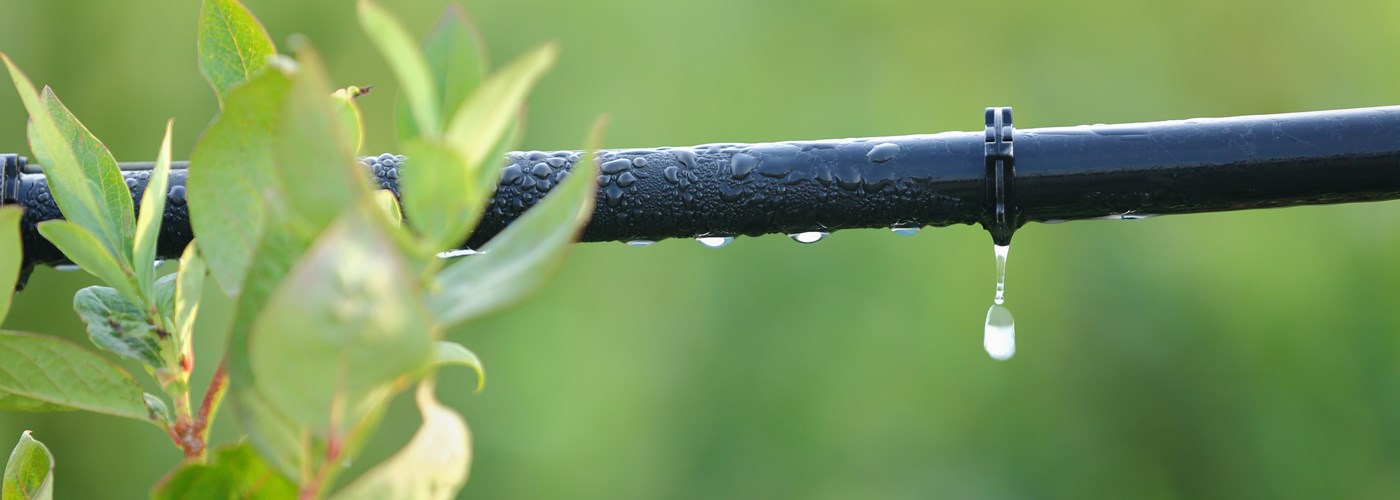
It is the technique or set of techniques that allow the artificial application of water: it essentially aims to replace the water consumed by plants in the process of perspiration/evaporation, commonly called evapotranspiration. Plants need a balance of soil, water, air and light.
Watering or Irrigation
It is the technique or set of techniques that allow the artificial application of water:
it essentially aims to replace the water consumed by plants in the process of perspiration/evaporation, commonly called evapotranspiration. Plants need a balance of soil, water, air and light.
The purpose of irrigation is to create optimum soil moisture conditions.
Advantages of irrigated agriculture
- Guaranteed production, not dependent on rain;
- Higher production per unit area.
Possible disadvantages of irrigated agriculture
- Intense cultivation may endanger soil fertility;
- Possible flood damage;
- Salinization hazard;
- The irrigation and drainage channels take up space;
- Costs involved;
- Leaching of nutrients by deep percolation.
Factors that determine the amount of irrigation water:
- Precipitation (Pr).
- Crop Water Needs (CWN) or Crop Evapotranspiration (ET).
Irrigation Methods
An irrigation system must take into account:
- the amount of water required for washing salts;
- losses in the transport of water from the source to the field and in the field;
- the water needed for the initial moisture replacement.
|
Distribution energy |
Methods |
Procedures |
|
Gravity |
Drainage |
Level watering |
|
Submersion |
Beds |
|
|
Pressure |
Infiltration |
Furrows |
|
Sprinkling |
Sprinkling (center pivot, hydraulic cannon, flop, etc.) |
The choice of one of these systems/methods/processes depends on:
- the quantity and cost of available water;
- the size and topography of the land;
- particularities of the crop to be irrigated;
- climatic conditions of the region in which the irrigation area is located.
Furrow irrigation
- main irrigation system used in our country;
- reduced irrigation efficiency (50 to 60%);
- tomato, maize, sunflower, soybean, tobacco crops, etc.
- bedside flow, adaptation of the terrain to the crop, slope and length of the furrows.
Basin irrigation
- Used in rice cultivation;
- Reduced irrigation efficiency (20 to 40%);
- It is important to consider the sizing and orientation of the basins, irrigation channels and drainage ditches.
Sprinkler irrigation
It has gained increasing importance. Each sprinkler distributes a flow of >500 l/h with a watering efficiency of 70 to 80%. The alternatives:
• fixed or conventional sprinkler
• center pivot
• traveler
• cannon
Center pivot
- preferred alternative for large areas (circular or semicircular);
- Irrigation and fertilization automation (nocturnal);
- Flexibility of operation in different situations (soils and slopes);
- Possible association between center pivot and fixed sprinkler for better use of the area.
Drip irrigation
- The drip irrigation (1 to 12 l/h) and the mini-sprinkler (20-150 l/h) systems have become particularly relevant in tomato crops;
- There is a foreseeable expansion to maize crops;
- Very high watering efficiency =90%;
- Significantly improves the efficiency of water and nutrient use.






